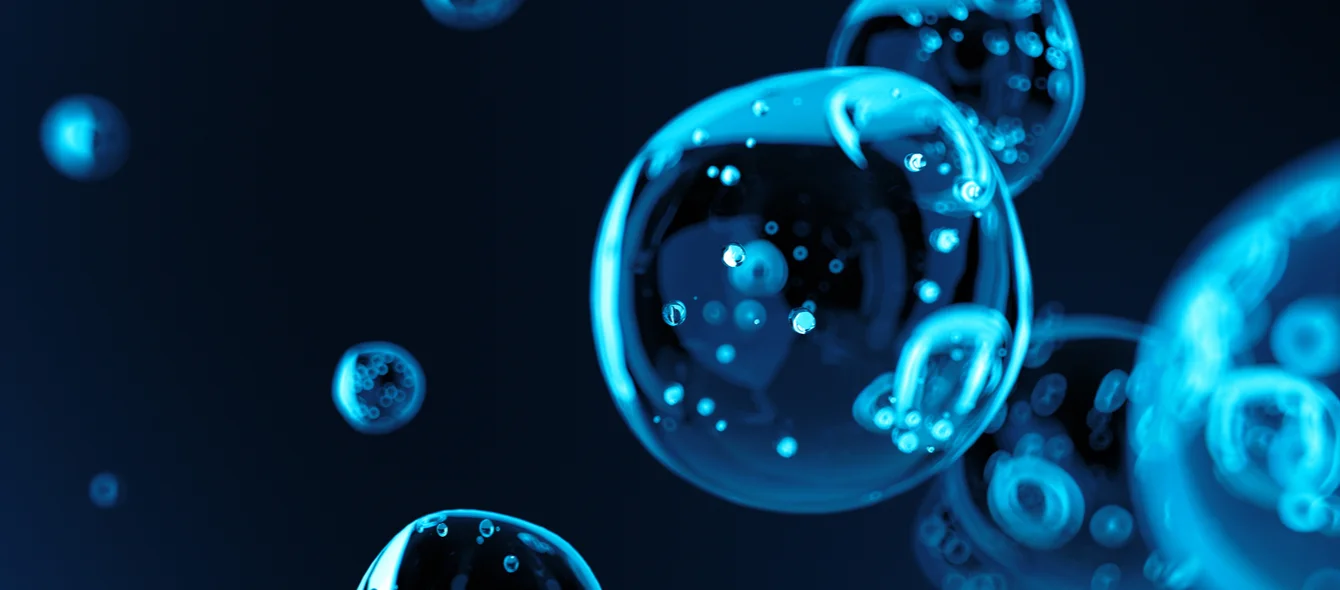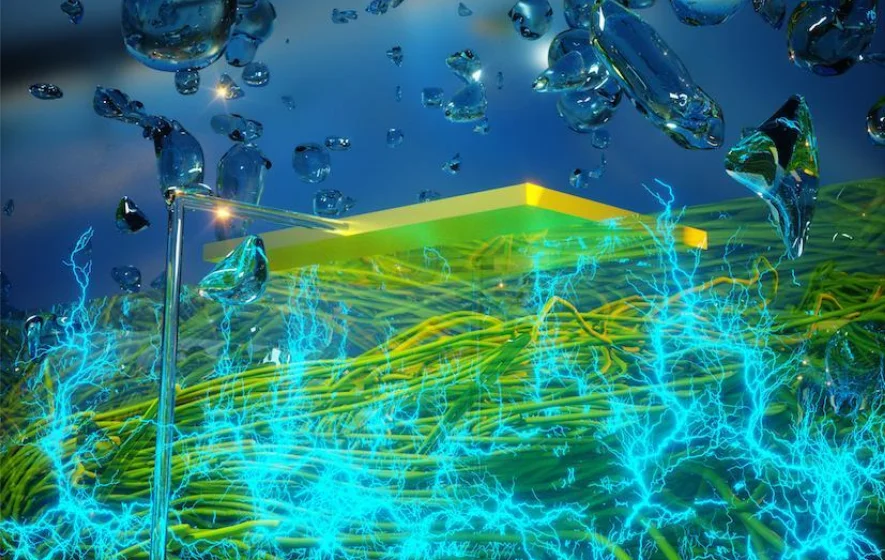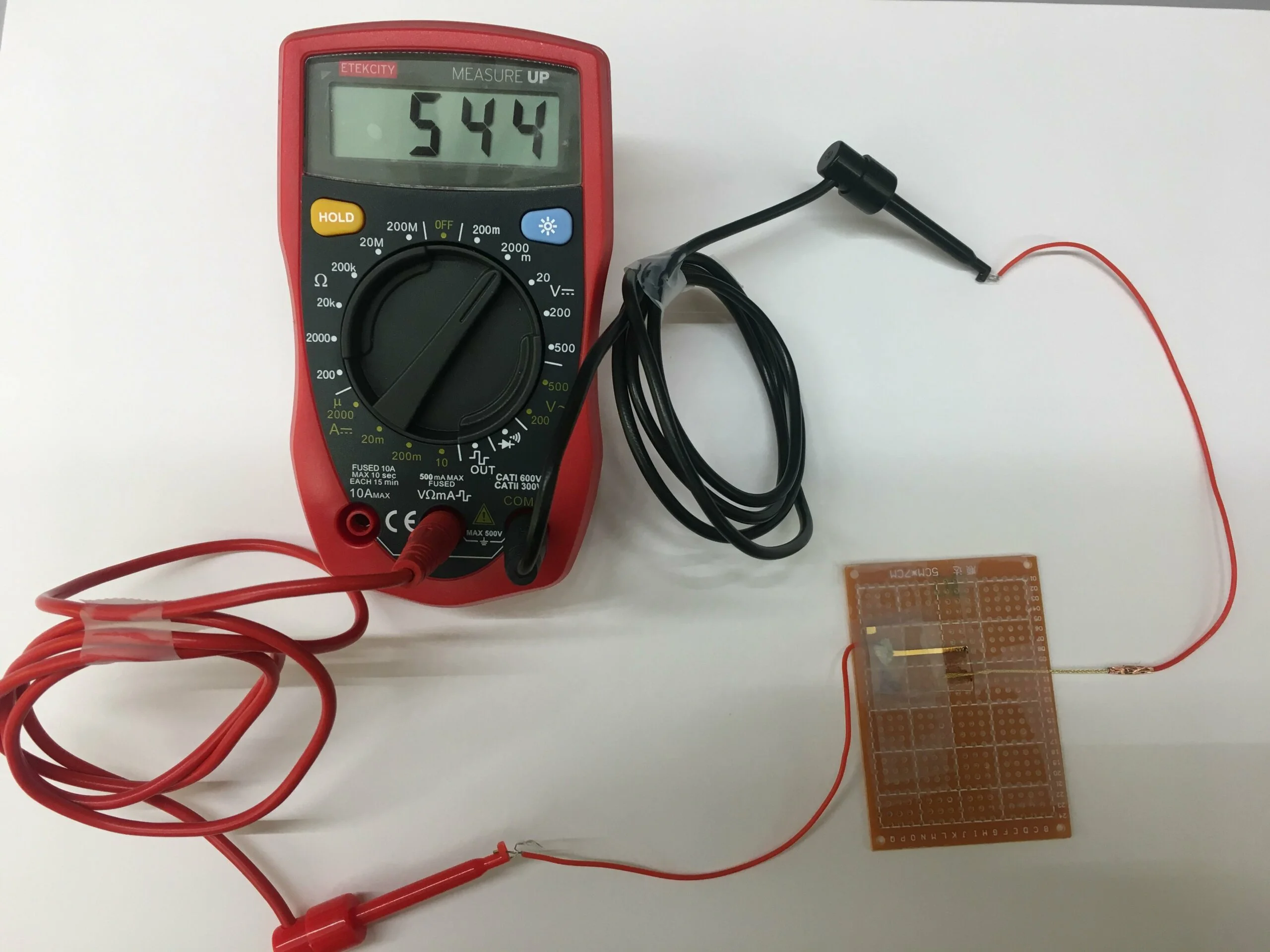Climate change has prompted scientists around the world to search for new forms of renewable energy to provide power in a clean, sustainable manner. By combining microbiology with electrical engineering, scientists at the University of Massachusetts (UMass Amherst) in the United States have shown that it is possible to harvest electricity from the moisture which exists in air. A key advantage is that there is always some moisture in the air, day or night, whatever the weather, potentially making ‘Air-Gen’ devices a perfect complement to wind and solar power.
Sustained output
Up until recently, moisture-based energy-harvesting technologies could generate electricity but only in small bursts and the time taken to recharge was much longer than the duration of power output. They also tended to rely on a liquid source of water, which implies a form of geographic dependency rather than a power source which can work anywhere.
However, the UMass scientists, in their paper Power Generation from ambient humidity using protein nanowires, published in the journal Nature in February, show significant advances.
The researchers developed a thin film device which produces a continuous current for at least 20 hours before recharging over about 5 hours, with a large improvement over earlier, similar devices in terms of power density. Monitored over a longer period, the device generated a stable direct current voltage of 0.4-0.6 volts for more than two months.
So how does it work?
The device consists of a very thin film of protein nanowires placed on a gold electrode patterned on glass. A second smaller gold electrode is placed on top of the nanowire film, partially covering it. The protein nanowires are something of a scientific wonder in themselves. The protein is harvested from a microorganism called Geobacter sulfurreducens. When purified and placed in the film they form a mesh which conducts electricity between the two electrodes. They are non-uniform and contain tiny holes – nanopores – through which water molecules can pass.
The scientists demonstrated that the device’s current was being generated by the build up of a moisture gradient. This means there were more water molecules at the top of the film, which is partially exposed to the atmosphere, than at the bottom which is sealed by glass. As the device absorbs moisture this gradient builds up and is maintained, even in desert conditions, in which humidity is less than 20%, although the best results were found at humidity levels of 40-50%. The maintained moisture gradient, the scientists say, makes the device fundamentally different to any of its predecessors and it is this which allows sustained electrical output.
The gradient allows electrons to flow though the nanopores and creates a current. Water molecules in the air naturally contain ions – molecules which have acquired a charge through gaining or losing an electron — or are ionised when absorbed on the thin film surface. These ions act as a virtually undrainable reservoir of input charge for the nanowires, which generate a current as a result of the voltage created by the moisture gradient.
All of this is taking place on an incredibly small scale – nanoscale. A nanometer (nm) is one billionth of a meter and a nano particle is a particle of less than 100 nm in a least one dimension.
So can the technology be scaled up?
The UMass scientists believe it can. Building up the devices in parallel or linearly increases the current. Moreover, the power output of the device is estimated at about 4% of the theoretical upper limit. In addition, a solar cell generates electricity over its length and width, but water moisture diffuses over three dimensions, which allows for a practical volumetric power density of more than 1 kilowatt per cubic metre, the researchers say, suggesting an ambient moisture device could outperform a solar cell.
Small electronic devices can already be powered by today’s ambient air generators and the UMass scientists hope soon to apply the technology, for example, to health monitors and smart phones. Part of the solution is scaling up production of the all-important protein nanowires. Here too, advances are being made, through the development of new microbial strains.
Photo credit: © shutterstock.com, Pavel Chukhov


